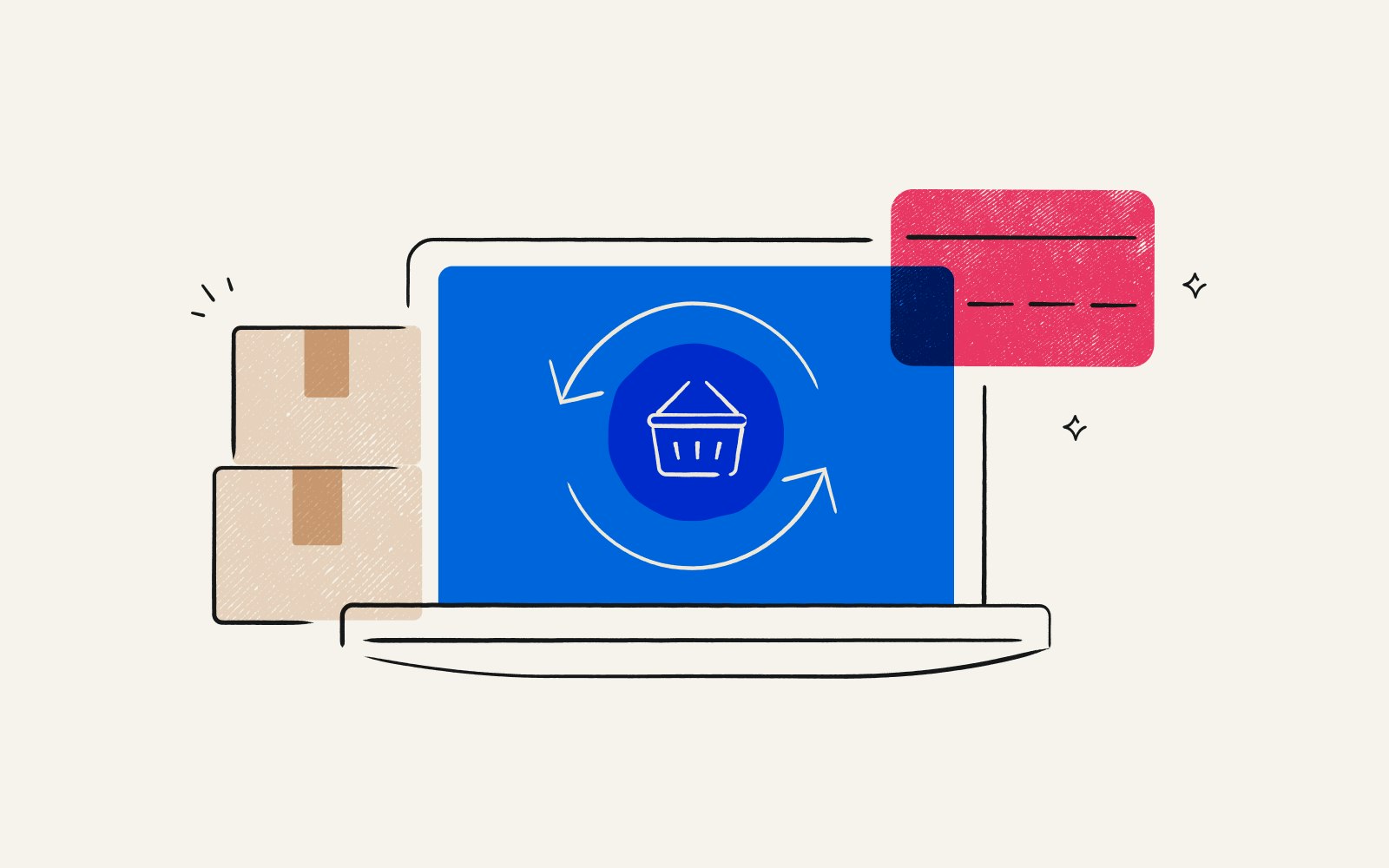Turn first-time buyers into repeat customers
By Andrew Littlefield●4 min. read●Mar 31, 2025

It doesn’t take an MBA to know that a repeat customer is more valuable than a one-and-done buyer. Whether you’re selling t-shirts on Instagram or closing multi-million dollar industrial equipment deals, closing the second deal is always easier than the first. But turning a one-time buyer into a loyal customer doesn’t happen by accident — it requires strategy and intent.
The value of repeat customers
Spending all your time attracting first-time buyers without reselling to your existing customer base is like going on endless first dates expecting to find a lifelong partner. Acquiring new customers requires more time, money, and effort, making retention a far more cost-effective strategy.
The commonly cited “rule of seven” in marketing suggests that new customers need seven different interactions with your brand before they’re ready to buy. While the exact number varies by industry and product, the concept holds. Customers rarely convert on first exposure. But repeat customers already know your brand, have experienced your product or service, and are much easier to convince the second time around.
Not only do repeat customers cost less to acquire, but they also have higher lifetime value (LTV). You already have access to their contact information, can target them directly without paying for additional ad placements, and can personalize their experience based on their past purchases. If you’re not actively nurturing this audience, you’re leaving money on the table.
Repeat customers vs. returning customers vs. recurring customers
Of course, the holy grail of customer retention is the recurring customer — someone who purchases automatically, often through a subscription model. Every brand seems to be chasing this dream, from razor companies to pet food brands.
Some industries naturally lend themselves to recurring revenue — think consumable products that require regular refills. Others, like high-end fashion or luxury goods, require a more nuanced approach to encourage repeat purchases. Even if a subscription model doesn’t fit your business, you can still develop customer habits that make purchasing from you a regular occurrence.
Understand why first-time buyers haven’t returned
Let’s go back to our first date analogy. Everything seemed to go well. You had chemistry, they gave you their number, maybe even kissed you goodnight. And now? Radio silence. Why aren’t they responding to your follow-up text?
"Many brands assume a customer will return simply because they had a good initial experience. That’s not enough. You need to give them a compelling reason to engage again,” says Brad Hess, founder of Demand Gen Guy, a B2B digital marketing consultancy.
Much like asking for a second date, your follow-up needs to be strategic. A vague “Hey, want to do this again sometime?” isn’t as effective as a targeted ask based on what you already know they liked.
Think about how this applies to your customers. Instead of just dropping a generic “Come back soon!” email, offer them a specific deal, exclusive access, or new product recommendation based on their purchase history.
Make a clear call-to-action: Vague language doesn’t convert. Instead of a generic follow-up, create a compelling reason to return, whether it’s an exclusive discount, an invite to a VIP sale, or a product recommendation tailored to their last purchase.
Remove barriers to entry: A cumbersome checkout process, high shipping fees, or a strict return policy can stop a potential repeat purchase in its tracks. Make the path to buying again as seamless as possible.
Prove you were listening: Use customer data to personalize recommendations. If they bought hiking boots, suggest gear that complements their purchase. If they signed up for a free trial, send tips on getting the most out of it before offering an upgrade.
Follow up: Don’t let a sale be the end of the relationship. Send post-purchase content like styling guides, product tutorials, or behind-the-scenes brand stories to keep customers engaged beyond the initial transaction.
How to increase repeat purchases
Repeat purchases don’t happen by accident. Here are some tips for securing that sweet second sale.
Improve your post-purchase experience
Why should anyone buy from you again if their first experience wasn’t exceptional? Deliver on your promises — fast shipping, great customer service, and a product that meets or exceeds expectations. The small details matter: a handwritten note, a thoughtful email sequence, or an easy return process can turn a one-time buyer into a lifelong fan.
“I have a monthly subscription to Grove for sustainable household cleaning products,” says Stacey Eliuk, a software engineer in Queens. “Every month, there’s a small handwritten note on the box. It makes me feel like a human packed my order and not some giant warehouse robot. It’s a nice touch that makes me appreciate the company more.”
Personalize communications
Personalization goes beyond slapping a customer’s name on an email. Use their purchase history and browsing behavior to send tailored product recommendations, restock reminders, or location-based offers.
“Personalizing communications is basically table stakes in today’s environment,” says Hess. “There are plenty of tools out there that will help you track not just what users purchase, but also what SKUs on your site or app they’re engaging with. Serving more of the things that actually drive their interest is what’s going to keep you showing up on their social feeds and email inboxes.”
Offer exclusive incentives
Make returning customers feel like VIPs. Offer early access to new products, special members-only discounts, or rewards for multiple purchases. You’ve earned their trust, now show them how much that means to you. The more valued a customer feels, the more likely they are to come back.
“I’ve been a loyal customer to Patagonia for over a decade,” says Bill Hays, an MBA candidate in Boston. “Marketing emails with sales announcements are a great way to get my attention. I already know I like the product so if I can save a few bucks I’m all about it.”
Pilot a loyalty program
Loyalty programs can be a game-changer for retention. Offering points for purchases, referrals, and engagement encourages customers to stay within your ecosystem. A well-structured program keeps buyers engaged and coming back for more.
Leverage subscriptions or auto-replenish
If your product is something customers will need again, make their lives easier by offering auto-replenish options or subscription models. Offer perks like free shipping, discounts, or exclusive products to make the decision even easier.
Run retargeting campaigns
Once someone has purchased from you, don’t let them fall off your radar. Retarget past buyers with ads featuring new arrivals, personalized recommendations, or limited-time deals.
“A classic problem I see with retargeting is people going way too specific when building retargeting audiences," says Hess, "or way too broad. With paid ads, you don’t want that audience to be too small, otherwise you’re not going to be able to reach them in a cost effective way. While there may be operational trade-offs, email and SMS campaigns are where you can afford to be much more niche and specific in regards to your audience targeting.”
Key takeaways
Retargeting existing customers is far more cost-effective than acquiring new ones.
Personalized and frictionless experiences increase the likelihood of repeat purchases.
Loyalty programs, subscriptions, and exclusive incentives build long-term customer relationships.
Strategic follow-ups and clear CTAs drive engagement and repeat sales.

